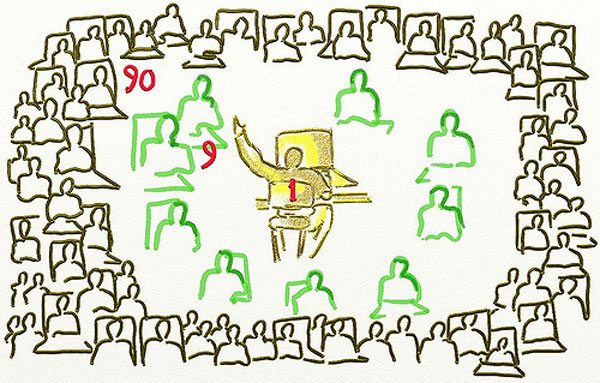
October 9, 2017; Milwaukee Journal-Sentinel
Reporter Bill Glauber noticed 11 concurrent capital campaigns underway in Milwaukee and sought to uncover why so many of the city’s major educational, cultural, and human services institutions launched their campaigns simultaneously. The short answer is that the economy is soaring and the Milwaukee community is civic-minded and generous. Alas, while fundraising continues apace, it takes place in an unequal economic environment.
The fact that Milwaukee nonprofits are having increased fundraising success is clearly a positive development, yet a question remains as to whether the fundraising is addressing Milwaukee’s largest social issues. For example, a 2015 NPR feature noted that Milwaukee had the “second-highest black poverty rate in the United States, and the unemployment rate is nearly four times higher for Blacks than for whites.”
The combined goals of the capital campaigns (and related nonprofit capacity-building campaigns) exceed $500 million, and most of the organizations are well on their way to achieving them: The University of Wisconsin-Milwaukee ($200 million), Milwaukee Symphony Orchestra ($120 million), Boys & Girls Clubs of Greater Milwaukee ($70 million), Oriental Theatre ($10 million), Milwaukee Repertory Theater ($10 million), Discovery World ($18 million), University School of Milwaukee ($27 million), Seton Catholic Schools ($25 million), St. Marcus Lutheran School ($19 million), and Marquette University ($10 million to match a $10 million challenge gift).
Additionally, Marquette University intends to raise $120 million to create the Athletic Performance Research Center. A $26 million nonprofit project called the Lakefront Gateway Plaza is being planned to connect the downtown to the waterfront. The Milwaukee Public Museum, the city’s primary natural and human history museum for 125 years is contemplating finding a new home.
Milwaukee has not always witnessed such robust fundraising. In 2014, NPQ asked whether there were too many nonprofits in the city while noting the bankruptcy of the city’s YMCA. NPQ also asked in 2014 if capital campaigns “crowd out other fundraising.”
Glauber asked one of Milwaukee’s leading philanthropists, Sheldon Lubar, about the state of fundraising in the city today.
Well, let me put it this way. If you have a son or daughter that doesn’t know what they want to do, I think being in fundraising is a growth job.
You cannot run a deficit if you’re in a nonprofit world. Your source of money comes from donors, so you have to be constantly raising money.
Sign up for our free newsletters
Subscribe to NPQ's newsletters to have our top stories delivered directly to your inbox.
By signing up, you agree to our privacy policy and terms of use, and to receive messages from NPQ and our partners.
Karen Spahn, senior vice president of development at the Milwaukee Public Museum, says, “There’s never going to be a time when you can just say, jump in now, there are only four campaigns out there instead of 12. You have to do what’s best for the organization.”
Marina Krejci, chief development officer at Milwaukee Rep, said, “Organizations have just gotten a lot better at their fundraising work. They understand their donors better now and have developed stronger deeper relations with them.”
To the question of multiple campaigns seeking support from some of the same donors, Rick Graber, president and chief executive of the Lynde and Harry Bradley Foundation, says simply, “You try to be a good steward of the resources you have. You can’t put everything into one project.”
Lubar agrees: “There’s no question in my mind. There are many, many more wealthy people than ever before.”
UW-Milwaukee is experiencing this to be the case. Its $200 million campaign has raised more than $170 million from some 17,000 donors, including 48 donors contributing more than $1 million.
But, as noted above, in a city known for its segregation, not everyone benefits equally. Even as far back as 2012, NPQ covered an editorial in the Milwaukee Business Journal that addressed how inequality plays out not just among different social needs, but within the Milwaukee arts field, and how this affects the bigger players’ constant capital drives.
According to the editorial, major arts venues located on county-owned facilities, including the Milwaukee Art Museum, the Public Museum, and Discovery World (a science museum), are about to launch a coordinated group capital campaign that some expect to include a target of more than $50 million … The Business Journal opinion piece suggests that these major arts venues need support but that there is not enough in charitable contributions to go around, concluding that the study will be a good way to start exploring how these major arts venues can get what they need.
At the other end of the spectrum, a report…by the Nonprofit Management Fund and Management Cornerstones has identified many very significant challenges for small nonprofit performing arts organizations (such as the African-American Children’s Theatre, one of the few remaining theatre companies for people of color of any age that remain in Milwaukee, and Early Music Now, an organization bringing early Renaissance music and traditional instruments to venues around the city).
And, not for nothing, but a lot of the money being raised is being put into physical plants, which create more fixed costs, which creates a bigger funding need…and the inequitable beat goes on.—Jim Schaffer













